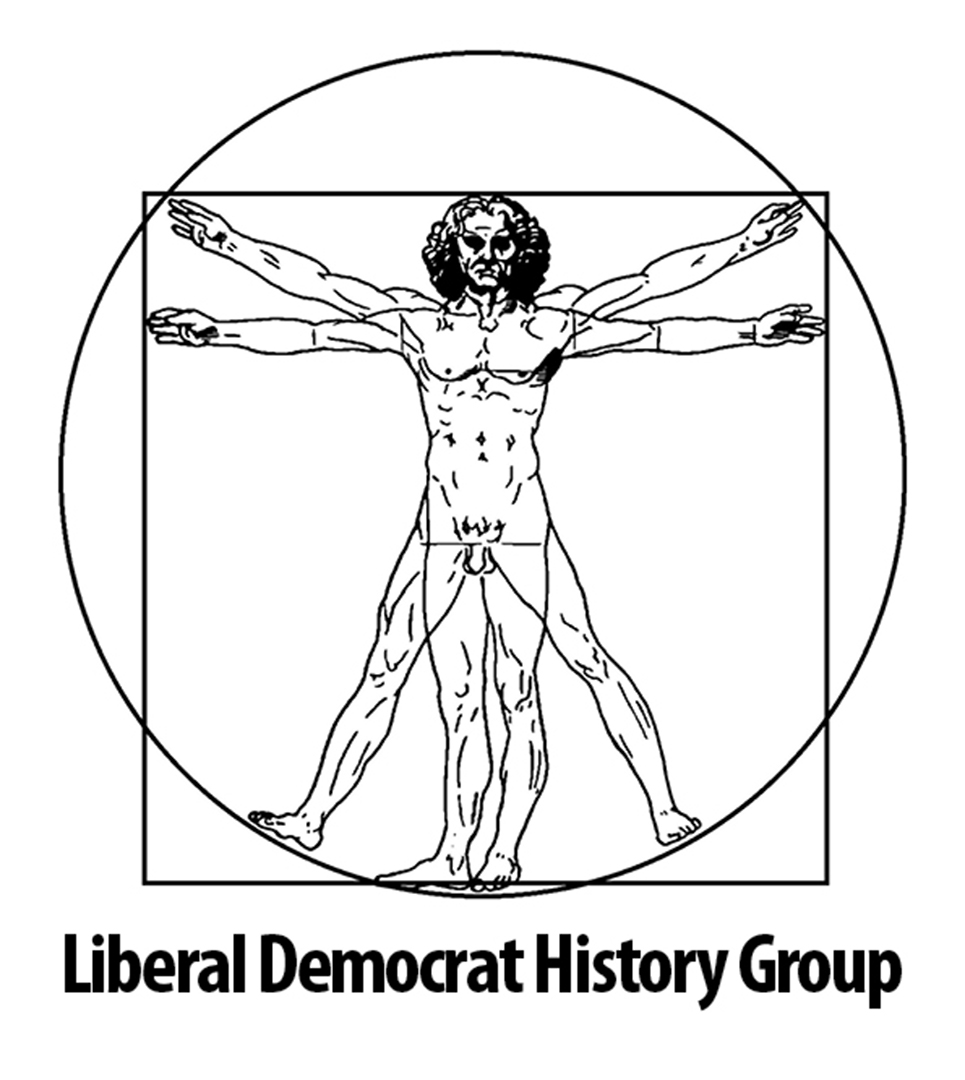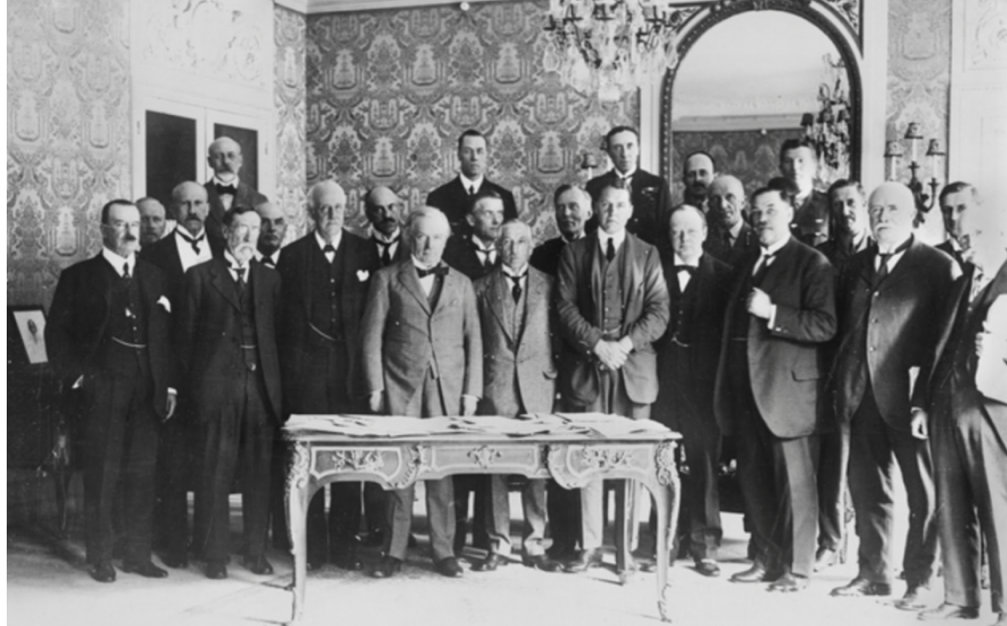Nonetheless, despite a long and highly charged battle over the issue, the Liberal head of the wartime Coalition, Herbert Henry Asquith, was finally able to introduce mandatory military service in January 1916, with the resignation of just one Liberal minister, his then Home Secretary, Sir John Simon.
As early as August 1914, the War Secretary, Lord Kitchener, had warned that the war could last up to four years and that a large expeditionary force would be needed to secure victory. Although thousands of young men initially joined up voluntarily, amidst a wave of patriot fervour, fewer and fewer volunteers started to come forward and by January 1915 Kitchener concluded that virtually all healthy young men between the ages of 19 and 35 would need to enlist in order to defeat the enemy.
Pressure to introduce some form of conscription became even more acute in light of Lloyd George’s work at the Ministry of Munitions. Asquith’s Liberal deputy felt that the Prime Minister was too lethargic and cautious in mobilising Britain’s war effort and the discovery that military action on the Western Front was being impeded by a shortage of working shells compelled Asquith to form a new Coalition government, with Lloyd George appointed as the new Minister of Munitions in May 1915. Lloyd George was directly responsible for resolving the shell crisis and mobilising British industry to the needs of the war effort and as industrial compulsion became an increasing reality, so the pressure upon Asquith to introduce some kind of military conscription intensified.
A series of military disasters had also made certain factions within both the Liberal and Conservative parties more enthusiastic about the idea of conscription. The Battle of Loos alone cost 50,000 men between September and October 1915, in addition to the thousands that had been killed or injured previously during the ill-fated Dardanelles campaign. Even front-bench Tories such as Curzon and Walter Long had begun to publicly argue the need for military conscription by this time.
Driven by events, Asquith established a special War Policy Committee, under Lord Crewe’s chairmanship on 12 August. Its remit was to consider how large an army would be needed to fight the war in the following year and to make suitable recommendations. Unable to agree on a suitable course of action, the committee eventually published three separate findings. These ranged from the need to introduce conscription without delay, to the assertion of Labour leader, Arthur Henderson, that more time was needed to convince the public of the need for compulsion. Anxious to buy himself more time, Asquith then asked the Director General of Recruitment, the 17th Earl of Derby to come up with an alternative recruitment scheme with the sole remit of boosting Britain’s volunteer army.
The so-called Derby Scheme was adopted in the Autumn of 1915. It encouraged all men between the ages of 19 and 41 to voluntarily attest that they were fit to fight on the grounds that they would only be called up for service when necessary. Married men were given the assurance that they would only be called up once the supply of bachelors had been exhausted. However, by December the Derby Scheme had been abandoned, having only managed to recruit around 350,000 additional troops. On the evening of 27 December, Lloyd George wrote to Asquith emphatically announcing his intention to resign unless the Prime Minister immediately introduced conscription for unmarried men.
Asquith capitulated and on 6 January 1916 the Military Service (Compulsion for Unmarried Men) Act received its first reading in the House of Commons. Although 35 Liberal MPs voted against the bill, it received Royal Assent on 27 January. By April, Asquith had again succumbed to additional demands from Lloyd George and had accepted the principle of extending conscription to married men.
The conscription row had a devastating effect on the Liberal Party and forced its members to review the aptness of their most treasured political belief, that of the freedom of the individual, in a time of war. For those Liberals that cherished the principle of laissez-faire, even the urgency and horror of war could not undermine such a sacred shibboleth. ‘With this wanton breach with historic Liberalism, that great movement practically comes to an end and a new alignment of parties must gradually take place’, one leading Liberal journal lamented on the introduction of conscription.
Trevor Wilson (The Downfall of the Liberal Party 1914-35) also claims that relations between Lloyd George and Asquith were strained as a result of the former pushing his reluctant master towards conscription. A letter from Asquith’s wife Margot, to her friend the Master of Ellibank, in October 1915, seems to support this view. Commenting that that her husband was stale and morally disgusted over the whole debacle, Margot drew attention to his reading of a New Testament extract, in which Peter betrays the Lord. She told Ellibank that Asquith had drawn a direct comparison between the religious parable and Lloyd George’s own attitude towards himself.
Chris Cook (A Short History of the Liberal Party, 1900-2001) shares the view that conscription created a schism between Lloyd George and Asquith and argues that the crisis marked the beginning of a wider split within the Liberal Party. On the one side, there were Asquith’s supporters, generally unprepared to sacrifice any element of their long held Liberal beliefs, even in a time of war. Then there were those Liberals that tended to follow Lloyd George and who were prepared to forgo their political beliefs in the short term in order to win the conflict. The existence of such very different political and moral outlooks was bound to cause even greater friction within the party as the war progressed.
Nevertheless, R J Q Adams (‘Asquith’s Choice: the May Coalition and the Coming Of Conscription, 1915-1916’ in Journal of British Studies 25, 1986) takes a somewhat different view, arguing that Asquith was not pushed into introducing conscription by anyone, least of all Lloyd George. Adams argues that Asquith had become resigned to the fact that conscription was necessary by the summer of 1915, but that he recognised that more time was needed to convince public opinion of the need. The Derby Scheme is thus presented as a delaying tactic that was intentionally designed to fail, so as to create the impression in the public mind that conscription was the only course left open if Britain wanted to win the war. Either way, the fact that Asquith was able to introduce conscription with just one ministerial resignation says something for his powers of persuasion in convincing ardent Liberals such as Walter Runciman and Reginald McKenna to remain within the Government.

